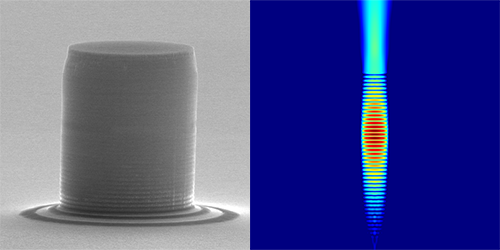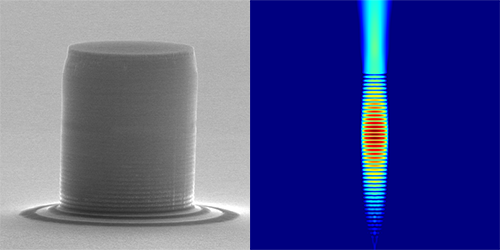All-Around Single-Photon Source
Photonic quantum technologies require light sources that emit single photons on demand. Three prerequisites are deemed essential for applications: purity (the sources must emit one and only one photon at a time); indistinguishability (all photons must be identical, for instance, in frequency and polarization); and efficiency. These three features have never been achieved simultaneously in a single device. But Chao-Yang Lu, of the University of Science and Technology of China in Shanghai, and colleagues have now demonstrated a single-photon source that combines them all.
Their scheme uses infrared laser pulses to excite an electronic resonance of a semiconducting quantum dot, triggering the emission of single photons at infrared frequencies. In a previous demonstration using a quantum-dot architecture, Lu and colleagues achieved an efficiency of only 6%. Now, they’ve ramped this value up to 66%. In the new scheme, the researchers exploit the so-called Purcell effect, which enhances the emission rate of the quantum dot by embedding it in a micropillar cavity whose resonant frequency matches that of the dot. The cavity also efficiently funnels the dot’s emission into a single-mode fiber. In experimental tests, the device emitted 3.7 million pure and indistinguishable photons per second.
The scheme could be the basis for a “boson-sampling” machine, a quantum device that can solve certain computational tasks faster than any classical computer. The authors suggest that with a few tens of these perfect single photons, a boson-sampling device could carry out such tasks more efficiently than the best desktop computers on the market.
This research is published in Physical Review Letters.
–Matteo Rini





